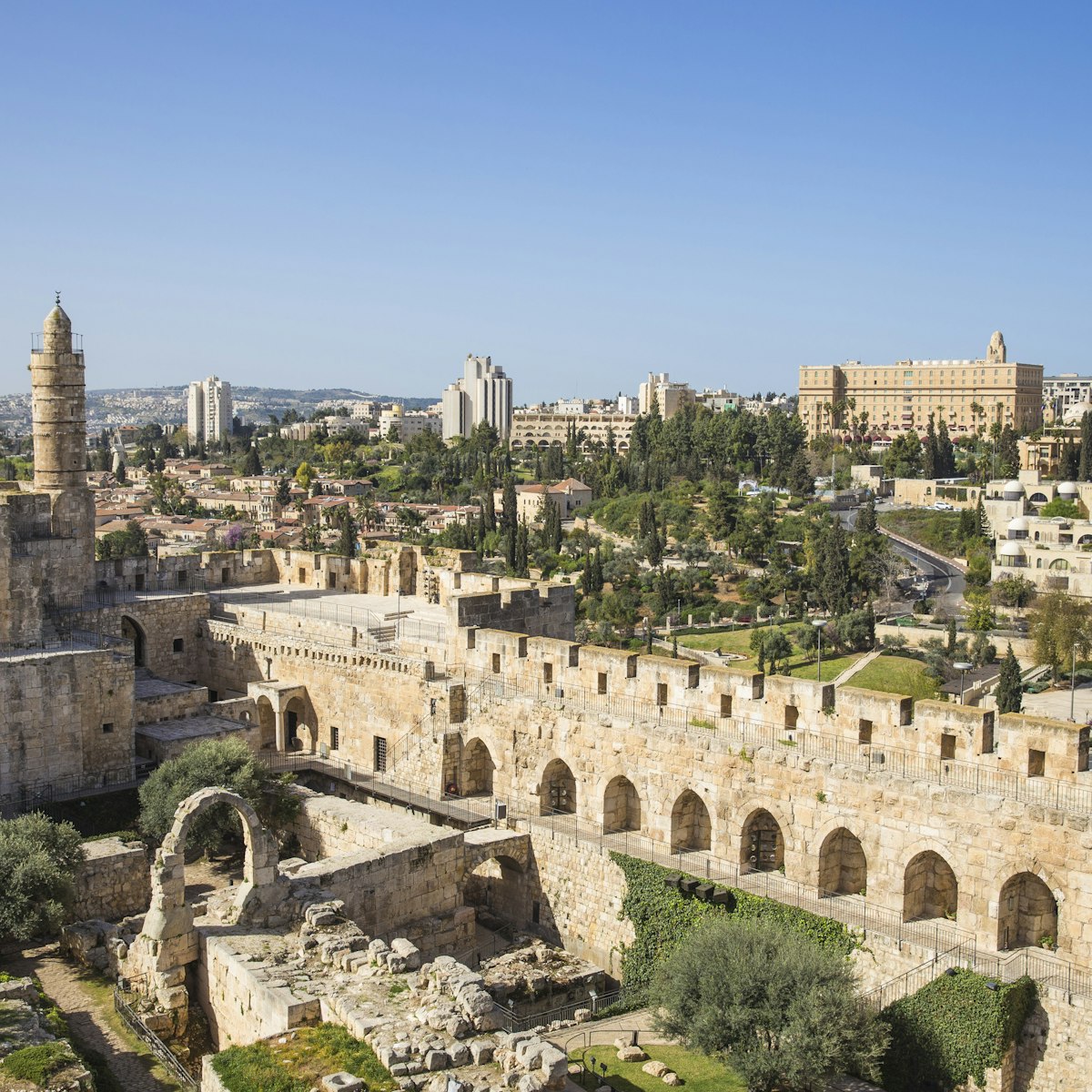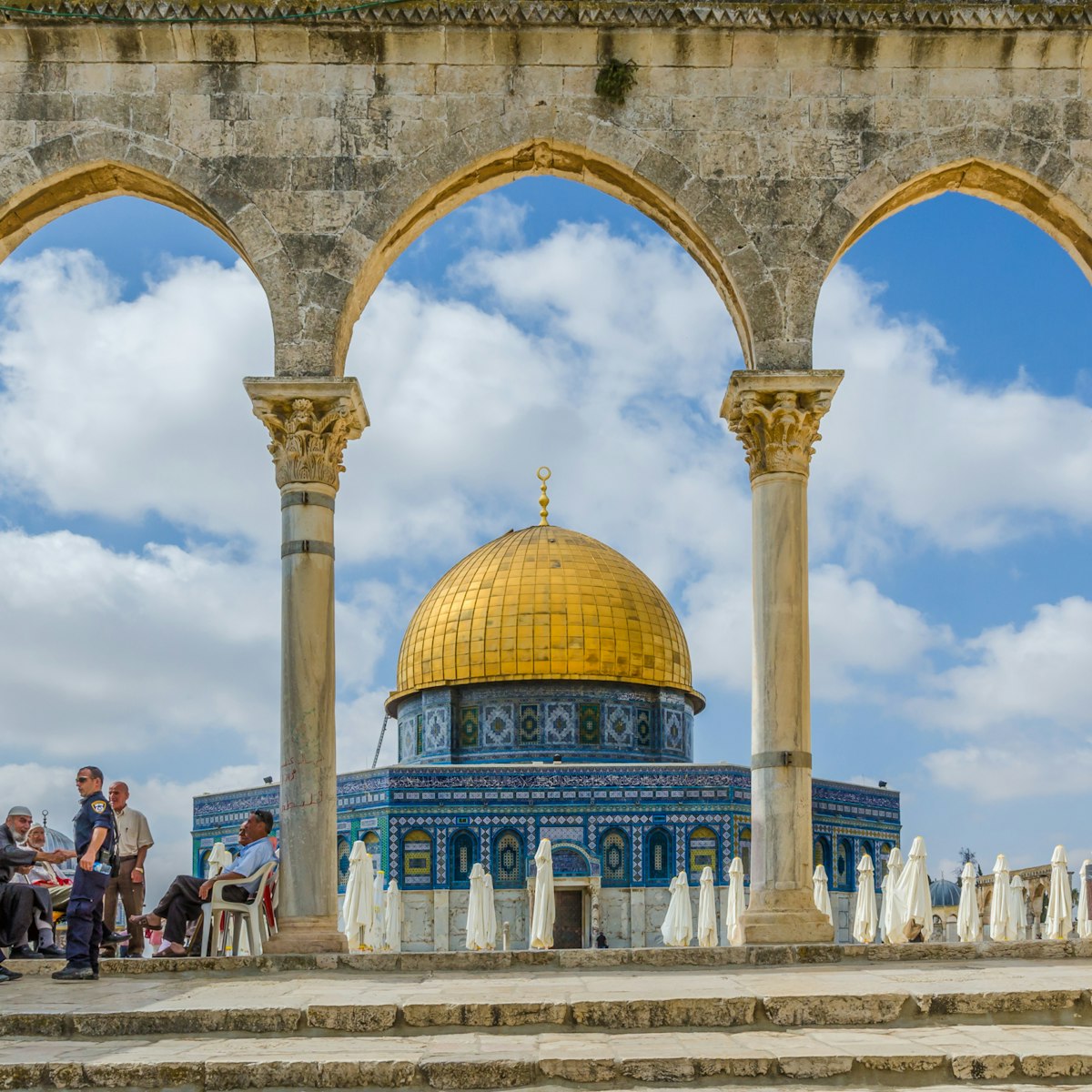The air is electric at Judaism's holiest prayer site, where worshippers recite scriptures, lay their hands on 2000-year-old stone and utter impassioned appeals. The Western Wall supports the outer portion of Temple Mount, upon which the Second Temple once stood. Its builders could never have fathomed that their creation would become a religious shrine of such magnitude. Rabbinical texts maintain that the Shechina (divine presence) never deserted the Wall. It's open to members of all faiths 365 days a year; dress modestly.
Following the destruction of the Temple in 70 CE, Jews were sent into exile and the Temple's precise location was lost. Upon the Jews' return, they purposely avoided Temple Mount, fearing that they might step on the Holy of Holies: the ancient inner sanctum of the Temple, barred to all except the high priest. Instead they began praying at this remaining element of the original structure.
The Wall became a place of pilgrimage during the Ottoman period, and Jews would come to mourn and lament the destruction of the Temple – that’s why the site is also known as the Wailing Wall, a name that Jews tend to avoid. At this time, houses were pressed right up to it, leaving just a narrow alley for prayer.
In 1948, Jews lost access to the Wall when the Old City was taken by the Jordanians, and the population of the Jewish Quarter was expelled. Nineteen years later, when Israeli paratroopers stormed in during the Six-Day War, they fought their way directly here and their first action on securing the Old City was to bulldoze the neighbouring Arab houses to create the sloping plaza that exists today.
The area immediately in front of the Wall now operates as a great open-air synagogue, exerting a pull discernible even to nonreligious visitors. It’s divided into two areas: a small southern section for women and a much larger northern section for men. Here, black-garbed ultra-Orthodox men rock backwards and forwards on their heels, bobbing their heads in prayer, occasionally breaking off to press themselves against the Wall and kiss the stones. Women face greater challenges to freely worship at the Wall, whose Orthodox custodians remain deeply uncomfortable with female voices reciting here. Mooted plans for a mixed-sex worship area at the Wall remain hotly debated. One movement, Women of the Wall, opposes the segregation of genders and the smaller space given to women at the Wall, and holds prayers and protests. The issue of gender segregation at the Wall is particularly important to American Jews, though it rarely registers for Israeli Jews. The Israeli government recently backtracked on a much-lauded and sought-after compromise to create a permanent, enlarged egalitarian prayer space in the area of Robinson's Arch.
To celebrate the arrival of Shabbat, there is always a large crowd at sunset on Friday. The plaza is a popular site for bar mitzvahs, which are usually held on Shabbat or on Monday and Thursday mornings. This is a great time to visit, as the area is alive with families singing and dancing as they approach.
Notice the different styles of stonework composing the Wall. The huge lower layers are made up of Herodian-era stones, identifiable by their carved edges, while the stones above them, which are chiselled slightly differently, date from the time of the construction of the Al Aqsa Mosque. Also visible at close quarters are the wads of paper stuffed into the cracks in between the stones. Some Jews believe that prayers and petitions inserted between the stones have a better-than-average chance of being answered. Prayers posted into the crevices are never thrown away; periodically the Wall attendants will gather all the notes that have fallen onto the prayer plaza, and they are interred along with the next deceased person to be buried on the Mount of Olives. Prayers are also accepted in digital form: an online form on the Kotel website allows you to send a prayer to be printed by the Wall custodians and taken there.
On the men’s side of the Wall, a narrow passage runs under Wilson’s Arch, which was once used by priests to enter the Temple. Look down the two illuminated shafts to get an idea of the Wall’s original height. Women are not permitted into this area.
Modest dress is recommended for visitors (if in doubt, cover from shoulders to knees), and a head covering is required for men (kippot are available if you don’t have one). Photography is prohibited on Shabbat; point your lens respectfully at other times. If you're visiting on Shabbat and want to plant a paper prayer in the Wall, write it before you arrive as writing isn't permitted in the plaza during this time.








